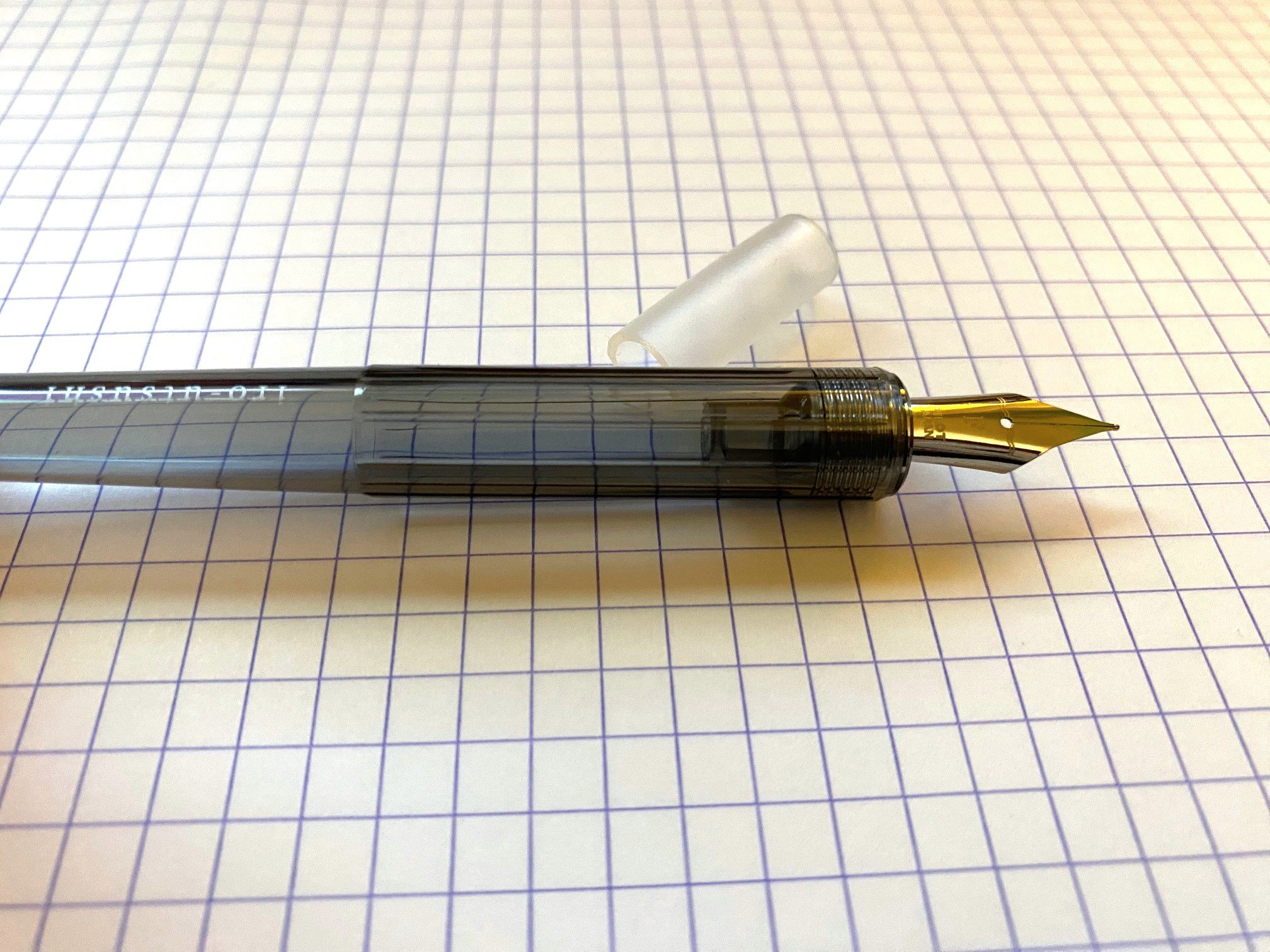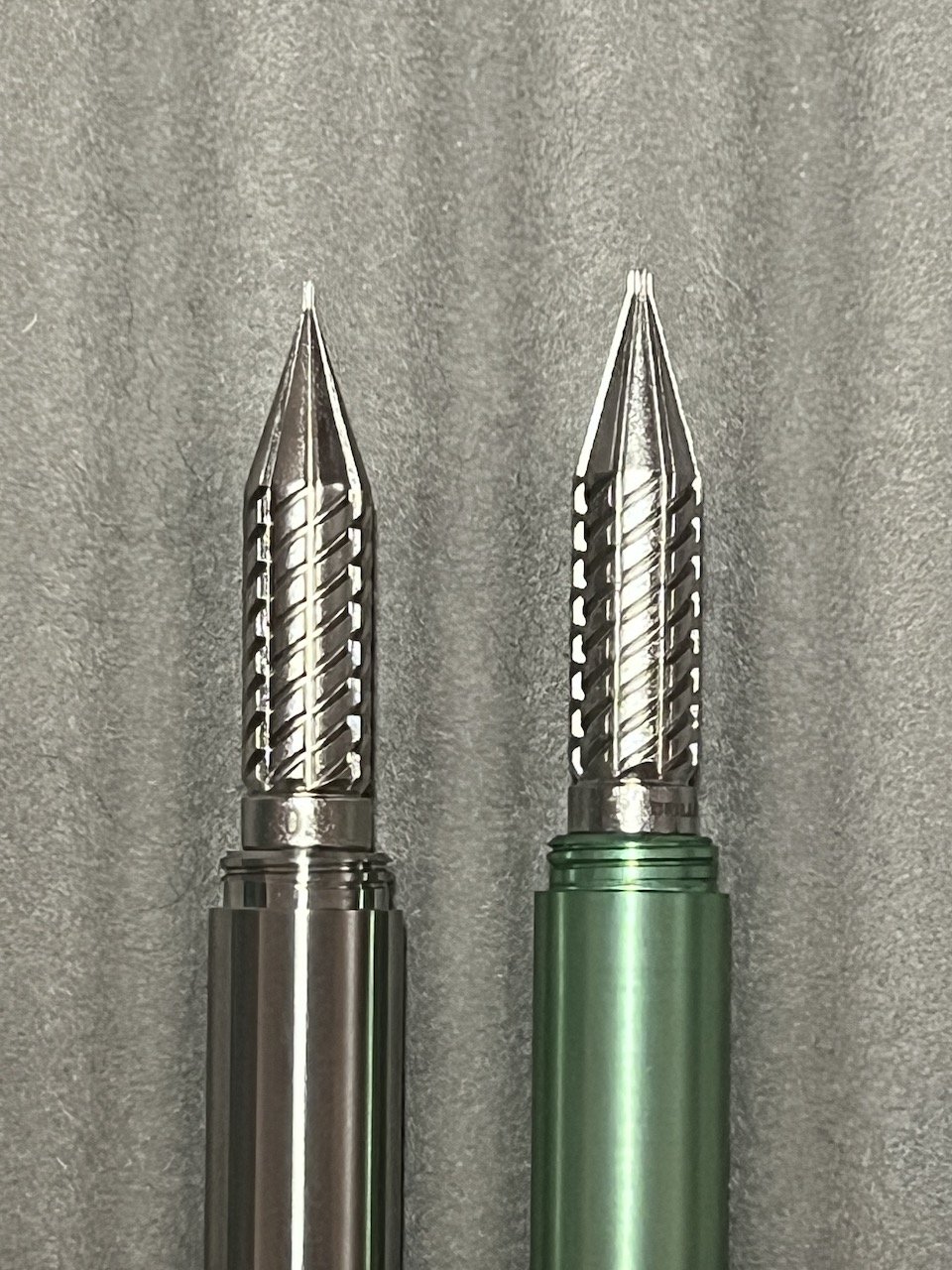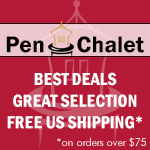(Sarah Read is an author, editor, yarn artist, and pen/paper/ink addict. You can find more about her at her website and on Twitter. And her latest book, Root Rot, is now available for pre-order!)
One of the things we love about fountain pens is that they can hold a wee tank full of our favorite ink and continuously feed it to a smooth nib. Dip pens give a similar nib experience, but without the ink tank hooked up to it. Instead, you dip the nib into a bottle of ink before writing on the page. It sounds inconvenient--having to stop writing all the time to re-dip! And with some dip nibs, it can be an issue. Leave it to Pilot to make one that just rocks.
The Pilot Iro-Utsushi is a simple design. It's a hollow, lightweight plastic body with a plain metal nib at the end. That's it, that's the pen! Uncomplicated. No feed, no moving parts, just a writey stick. The body comes in several color options, this one is a smokey, clear grey. The body tapers steeply toward the end, and it has a fairly plain grip section. There are a few textured lines along the length of the grip to help with slipping, but they're so smooth I'm not sure they do much. The pen is so light, though, that it doesn't need a fancy grip section. Balance and control aren't issues.
The nib can be either fine or medium. The one I tested is a fine nib. If you've written with a Pilot Metropolitan pen, the writing experience is similar. Which is to say, it's good. The nib is smooth and has perfect ink control. It's not too wet, but never feels dry. It isn't flexible at all, but it creates a nice, consistent line.
The most noticeable feature of this dip pen is that it writes for aaaaages on a single dip. I got 70 words on a single dip--about a third of a page. Two dips per page? That's hardly an interruption at all. And I could scribble vigorously across more than an entire line of a page before a single dip ran out. Despite holding a useful amount of ink, the nib never dripped. There was no mess, no fuss--just a pleasant writing experience.
The only issue I had with the pen at all is that I wish it had a roll stop of some kind. Because it has no real cap, just a rubber sleeve covering the nib, it tends to roll around whenever it is set down. Other than that, this is a great dip pen. It is currently priced at $11, which is a little higher than I thought it would be. The Pilot Varsity is only $3.20, and it has ink in it! It's a fair price compared to fancier dip pens, though, and it would be perfect for ink testing. Or just writing anything--the dipping is rare enough that it doesn't slow things down. It feels old-timey. Like I'm writing some kind of love letter or a constitution, not a grocery list. I dig it.
(JetPens provided this product at no charge to The Pen Addict for review purposes.)
Enjoy reading The Pen Addict? Then consider becoming a member to receive additional weekly content, giveaways, and discounts in The Pen Addict shop. Plus, you support me and the site directly, for which I am very grateful.
Membership starts at just $5/month, with a discounted annual option available. To find out more about membership click here and join us!







































